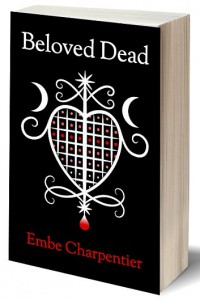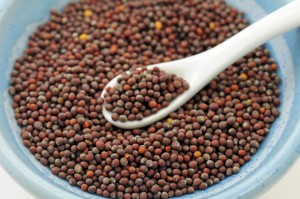By Embe Charpentier, special to Charleston Currents | Consider the last place among your travels that possessed a mythology all its own. Perhaps you heard a Caribbean fable after a Junkanoo parade, were regaled by an Appalachian storyteller or listened to a legend of Marie Laveau’s reign as voodoo queen of New Orleans. When you review the trip in your mind years later, the folklore lives on as intimately as the tastes, sights, and sounds of the region.

Charpentier
Charleston’s peculiar myths left me with an irresistible need to research. Where else do people so actively resist the incursion of the supernatural? Charlestonians paint a porch ceiling “haint blue.” Why?
The popularity of this lovely light aqua hue goes hundreds of years back in time to the Gullah people of the South Carolina/ Georgia Lowcountry. Descendants of African-American slaves, Gullahs have a belief system that incorporated Christianity with African lore. Since they relied on the inability of a ghost to cross water, they painted parts of their homes “haint blue” to resist haunting.
 How is a haint different from a mere ghost? Many sources don’t make a serious distinction between the two, relying on the linguistic similarity between the words “haunt” and “haint” to assert they’re the same. Not so. Haints are creatures of habit; moaners don’t rattle chains. And though most haints don’t have a good reputation, the Gray Man of Pawleys Island proves haints may have good intentions. The Tamarisk Cottage, the Gray Man’s home, still stands. Residents of the island claim he is still living in and around the cottage, warning them of approaching hurricanes.
How is a haint different from a mere ghost? Many sources don’t make a serious distinction between the two, relying on the linguistic similarity between the words “haunt” and “haint” to assert they’re the same. Not so. Haints are creatures of habit; moaners don’t rattle chains. And though most haints don’t have a good reputation, the Gray Man of Pawleys Island proves haints may have good intentions. The Tamarisk Cottage, the Gray Man’s home, still stands. Residents of the island claim he is still living in and around the cottage, warning them of approaching hurricanes.
So I figured I knew about haints well enough. Then I ran into boo-hags, a whole new mythology that will capture the imagination – and your breath.
First of all, a boo-hag doesn’t have to resemble a crone, though many do. Hags aren’t witches, though both ally with supernatural powers. These creatures slip their skin at night to find a victim. Their spirit – which may be accompanied by some of their corporeal self – finds any keyhole, mouse hole, or crack in the wall to slink into a sleeping victim’s home. While there, the hag will lay on top of their target’s chest, breathing with him throughout the night. A night with a hag won’t kill you. As a matter of fact, you may sleep well. Your condition upon waking is another matter.

Brown mustard seeds
“Don’t let the hag ride ya,” was standard advice in Charleston for hundreds of years — and for good reason. An evening with a hag on your chest could result in fatigue and irritability for the rest of the day. Since no one would stay up all night defending himself against a hag, residents of the Lowcountry devised a few tried-and-true ways to repel these “air-vampires.” If painting your house with haint blue didn’t provide enough insurance, mustard seeds could be scattered near a bedroom doorway. Legends declared that hags would stop to pick up each of the tiny seeds from the floor, keeping them too busy to lay atop their intended prey. The many straws in a broom propped next to a door also reputedly kept the hag occupied. Horseshoes above the door might lead to a hag’s extended trip in the horse’s every footstep – and peaceful slumber.
Naturally, these obsessive-compulsive detours won’t stop these devious spirits every time. For those seeking a permanent solution, eliminating a hag will take a fierce will and strong stomach. As vampires fear daylight, so hags need to reclaim their skins at dawn. If a hag-hater prevents his nemesis from reclaiming her skin, she will lose her power. Since these sly creatures can fit in every nook and cranny, a hunter worth his salt uses just that – salt, under the skin. Unable to tolerate the briny effect on their bodies, they shrivel like slugs. Repulsive — but effective and eternal.
Before you believe that this short article explores the depth and breadth of Carolina legends, check out some primary sources. Though I can’t guarantee that Lowcountry lore will excite your imagination, you may look at your daily comings and goings with a new sense of mystery.
In South Carolina, ghost stories aren’t just for Halloween.
Embe Charpentier’s novella, Beloved Dead, weaves a tale about a Charleston haint who demands vengeance. His target? The boo-hag who killed him in 1819. Beloved Dead is published by Kellan Publishing, and is available on its website, Amazon, Kobo, and Barnes and Noble.



 We Can Do Better, South Carolina!
We Can Do Better, South Carolina!
























